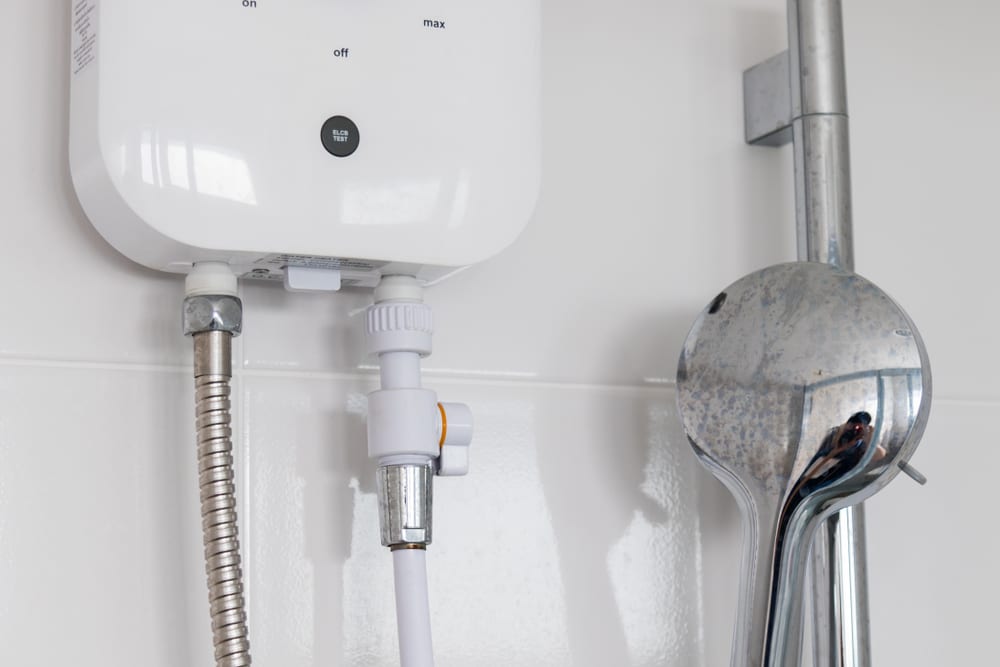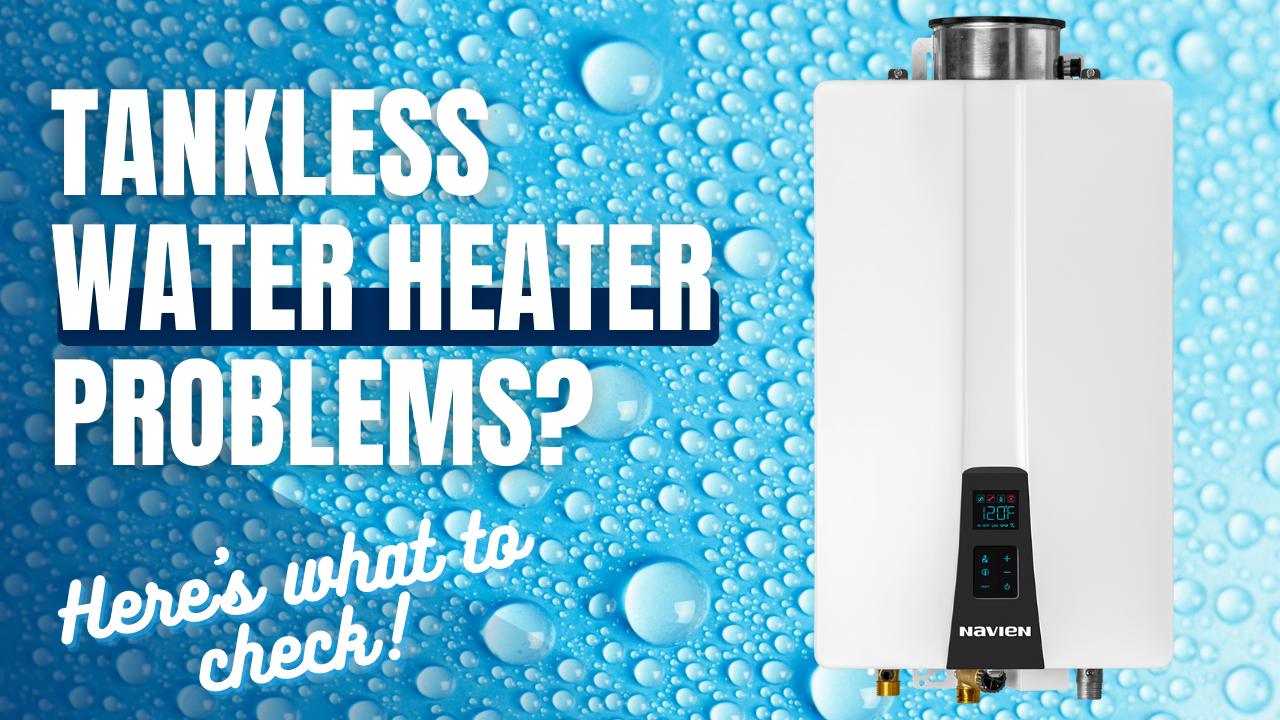Your Rinnai water heater might not be working due to power issues or a malfunctioning component. Check the power supply and error codes for clues.
A malfunctioning Rinnai water heater can be frustrating, especially when you need hot water. Several factors could cause this issue, including power supply problems, faulty components, or incorrect settings. Ensuring proper maintenance and regular inspections can prevent these issues. Always begin by checking the power source and any displayed error codes.
These initial steps can often identify the problem and guide you toward a solution. If you’re unable to resolve the issue on your own, contacting a professional technician is advisable. Regular servicing can extend the life of your water heater and ensure it operates efficiently.

Credit: www.wmhendersoninc.com
Page Contents
- 1 Introduction To Rinnai Water Heater Troubles
- 2 Initial Diagnostic Steps
- 3 No Hot Water? Here’s What To Check
- 4 Insufficient Hot Water Supply
- 5 Dealing With Fluctuating Temperatures
- 6 Error Codes And Their Meanings
- 7 Maintenance Tips To Prevent Future Issues
- 8 When To Call A Professional
- 9 Concluding Advice For Rinnai Owners
- 10 Frequently Asked Questions
- 11 Conclusion
Introduction To Rinnai Water Heater Troubles
Rinnai water heaters are popular for their efficiency. Many people trust them. But sometimes, they might not work. It is important to know why. Common problems can be fixed easily. Understanding these issues helps a lot.
One common issue is no hot water. This can happen due to many reasons. Sometimes, the heater has no power. Another issue is strange noises. This might mean there is air in the system. Water leaking is also a common problem. It usually means a broken pipe or connection. Low water pressure can also occur. This can be due to blocked pipes.
Effective troubleshooting saves time and money. It ensures the heater works well. This helps in getting hot water always. It also prevents bigger problems. Regular checks keep the heater in good shape. Fixing small issues early is very important. This extends the heater’s life. Always refer to the manual for guidance.
Initial Diagnostic Steps
Check power supply and gas connections for issues. Inspect water heater’s thermostat settings and ensure proper ventilation. Look for error codes on the display panel.
Safety Precautions
Always turn off the power before checking the heater. Water and electricity don’t mix well. Make sure the area is dry. Wear rubber gloves for extra protection. Keep a fire extinguisher nearby. Never work alone. Let someone know what you are doing. Make sure to read the user manual. Follow all safety guidelines mentioned.
Identifying Error Codes
Rinnai water heaters show error codes. These codes help identify problems. Look at the display on your heater. Find the error code showing. Common codes include error code 11 for ignition issues. Error code 12 means flame failure. Error code 52 means fan motor problem. Check your user manual for other codes. Write down the code before calling a technician. This will help solve the issue faster.
No Hot Water? Here’s What To Check
Check if the gas supply is on. The gas valve should be in the open position. Look for any leaks in the gas line. Ensure the gas meter is working properly. Make sure the main gas valve is fully open. Confirm that all valves are not blocked.
Verify if the water heater is plugged in. Check if the circuit breaker is on. Ensure the power switch is not off. Look for any blown fuses. Confirm the thermostat is set to the correct temperature. Make sure the power cord is not damaged.
Insufficient Hot Water Supply
Experiencing insufficient hot water? A malfunctioning Rinnai water heater could be the culprit. Common issues include a faulty thermostat or sediment buildup.
Flow Rate Considerations
The flow rate can affect the hot water supply. A low flow rate might not trigger the heater. Check all faucets and showers for proper flow. Ensure filters and aerators are clean. Sometimes, clogs can reduce the flow rate. Regular maintenance helps avoid this issue.
Temperature Settings Adjustments
Incorrect temperature settings can cause insufficient hot water. Ensure the temperature is set to your preference. The default setting might be too low. Adjust it slightly to increase the heat. Be careful not to set it too high. High settings can cause scalding. Always follow the manufacturer’s guidelines for safety.
Dealing With Fluctuating Temperatures
Experiencing fluctuating water temperatures? Your Rinnai water heater might be malfunctioning due to a faulty thermostat or mineral buildup. Regular maintenance and timely repairs ensure efficient performance.
Water Heater Capacity
Water heater capacity is very important. A small water heater cannot heat water for a big family. Always check your water heater’s capacity. Compare it with your needs. If your water heater is too small, you may get cold water quickly. A larger heater may solve your problem.
Mixing Valve Functionality
The mixing valve mixes hot and cold water. If it does not work, you get fluctuating water temperatures. Check the valve for any issues. Sometimes it may need cleaning. Other times, you may need to replace it. A good mixing valve keeps water temperature stable.

Credit: www.reddit.com
Error Codes And Their Meanings
Rinnai water heaters show error codes to help you. The most common error code is Code 11. It means no ignition. Code 12 shows a flame failure. Code 14 means a thermal fuse problem. Code 16 indicates overheating. Code 61 is a fan motor issue. Each code tells you what is wrong.
Sometimes, resetting the heater can help. First, turn off the power to the heater. Wait for 30 seconds. Then, turn the power back on. This simple step can fix many issues. If problems continue, check the error codes again. You might need a professional to help. Always follow the manual’s instructions.
Maintenance Tips To Prevent Future Issues
Regular maintenance can prevent your Rinnai water heater from malfunctioning. Clean filters and check gas connections for smooth operation.
Regular Cleaning
Keep your Rinnai water heater free of dust and dirt. Clean the exterior with a damp cloth. Check for any obstructions around the vents. This helps the heater work efficiently. Remove any debris from the area. Make sure the heater has enough airflow.
Annual Inspections
Hire a professional to inspect your water heater every year. They will check for any issues. This can prevent major problems. They will also clean the internal parts. This keeps the heater running smoothly. Regular inspections can extend the heater’s life. Always use a certified technician for inspections.

Credit: gopaschal.com
When To Call A Professional
Sometimes your water heater has complex problems. These might include electrical faults or gas line issues. These problems are not easy to fix on your own. A professional can diagnose and repair these issues safely. Trying to fix these yourself can be dangerous. You may also void your warranty. It’s best to leave complex issues to the experts.
Rinnai water heaters often come with a warranty. If your heater is still under warranty, call a professional. They are trained to handle warranty repairs. Using a professional ensures the work is done right. This keeps your warranty valid. Always check your warranty terms before attempting repairs. This way, you avoid extra costs or voiding the warranty.
Concluding Advice For Rinnai Owners
Regular maintenance is key to a smooth-running water heater. Check for any leaks or strange noises. Keep an eye on error codes. These codes help you find problems early. Clean the filters to avoid blockages. Annual inspections by professionals can catch issues. Using Rinnai-approved parts ensures long-term performance. Always follow the user manual.
Rinnai offers many support options. The official website has troubleshooting guides. Customer support can be reached by phone or email. Local service centers are also available. User forums can provide tips from other owners. YouTube tutorials offer visual guides for DIY fixes. Always use official resources for reliable information.
Frequently Asked Questions
Why Is My Rinnai Tankless Water Heater Not Heating?
Your Rinnai tankless water heater may not heat due to clogged filters, gas supply issues, or faulty sensors. Check error codes for specifics. Regular maintenance helps avoid these problems.
How Do I Reset A Rinnai Water Heater?
To reset a Rinnai water heater, turn it off and unplug it. Wait 5 minutes, then plug it back in and turn it on.
Why Is My Tankless Water Heater Not Getting Hot?
Your tankless water heater might not get hot due to a clogged filter, low gas pressure, or an electrical issue. Check these components for problems.
Why Won’t My Rinnai Heater Ignite?
Your Rinnai heater might not ignite due to a lack of gas supply, dirty igniter, or faulty thermostat. Check for error codes, ensure the gas valve is open, and clean the igniter. If issues persist, consult a professional technician.
Conclusion
Resolving issues with your Rinnai water heater can restore comfort in your home. Regular maintenance is key. Check for common problems and consult a professional if needed. Proper care ensures your water heater runs efficiently. Addressing minor issues promptly can prevent costly repairs.
Keep your Rinnai water heater in top condition for reliable hot water.

I did my annual cleaning. Noticed an instruction to blow out panel with compressed air (first time doing tHIS). I did this at a distance, not with air nozzle inside panel. I ran the vinegar-water mix through rinnai unit as you are suppose to do. I have done this many times with no issue. Hooked it all back together. Water on, gas on, elec on,.
No heated water, unit is not showing any water flow (light not coming on that says unit is WORKING). The little green light that comes on when it detects water flow is not on. NO ALARM CODE OF ANY KIND APPEaRING. NONE. NO ALARMS.
I guess cleaning this unit broke it. I will never ever clean it again.